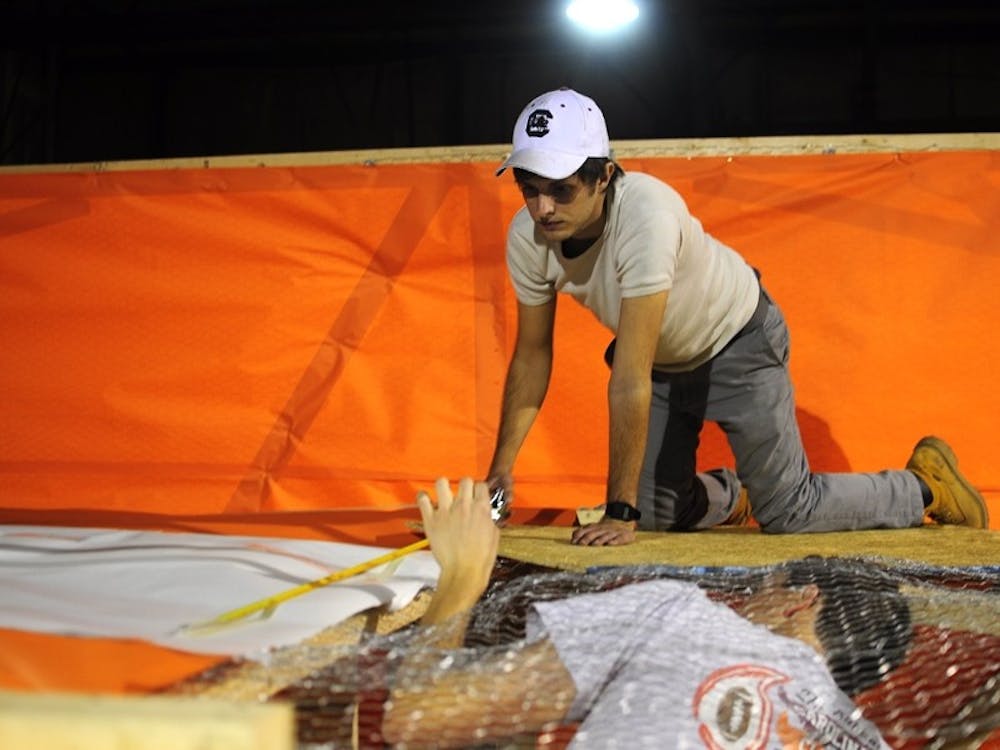Engineering students plan more dramatic finale
Before it can be burned, it must be built.
A little more than 24 hours remained before today’s annual Tiger Burn, although the structure didn’t look much like a tiger yet Sunday afternoon. In a leaky warehouse at the corner of Greene and Pulaski streets, patches of bright orange paper lit up the gray room as a local rock station played on the radio in the background.
More than 30 feet tall, 18 feet wide and 25 feet long, the massive tiger effigy was built in seven segments, which will be assembled by a crane this afternoon at the Greene Street Intramural Field, just in time for the evening’s pep rally for Saturday’s football rivalry matchup with Clemson.
About 25 undergraduate engineering students contributed to the design and construction of the tiger, a collaboration of USC’s chapters of the American Society of Mechanical Engineers (ASME) and the American Society of Civil Engineers (ASCE).
It’s been in the works since the last week of October, and ASME Project Lead Jeremy Johnson estimated that more than 250 man-hours will have been put into the project by the time of its completion this afternoon.
“It’s very rewarding,” said Johnson, a fifth-year mechanical engineering student. “You get into the warehouse and have all these undergraduate students in there, and they’re working together, having fun. And they’re gaining experience and knowledge. And then you’re actually working toward a goal as well. It’s very rewarding.”
Each section of the tiger was designed, built and decorated individually before it was integrated and assembled together into the final product, which consists of wooden frames wrapped in chicken wire and then covered in orange paper.
The team was allotted $1,100 in Student Government funding for supplies, Johnson said, but the worth of the finished structure is “priceless.”
“It’s one of a kind,” Johnson said.
The engineers alter the structure’s design slightly each year, Johnson said.
This year’s model features a slanted torso supported by the upright front legs and flanked by the haunches of its hind legs. The biggest design change this year was in how the head is assembled, which was designed for a more exciting end to the burn, Johnson said.
“Once the paper’s gone, you have a structure of two-by-fours that usually takes a good bit longer to burn. This year we’re adding a little extra to it,” Johnson said. “Instead of it just coasting out — a big fire dying down — we’re going to have more of a grand finish.”
Johnson wouldn’t say just what the finale would entail.
The project was a unique experience for the engineers, who are trained to design and build structures for endurance — not to collapse in flames.
But knowing the tiger was destined for destruction only added to the satisfaction of the project, said ASME President Chase Dunn, a fourth-year mechanical engineering student.
The builders said they took pride in being a part of the Tiger Burn tradition. And they took their role in that tradition quite seriously.
“For the voodoo to work, it’s got to be at least 30 feet (tall),” Dunn said with a grin, as he stapled a wide strip of orange paper onto a hind leg. “If it’s 29’11’’, we’re going to lose.”

